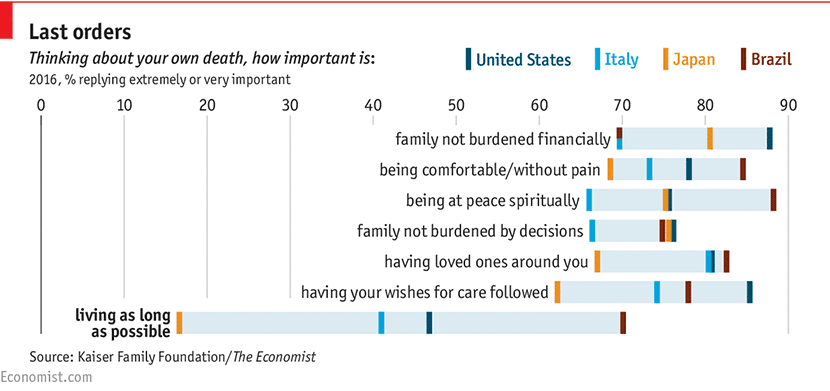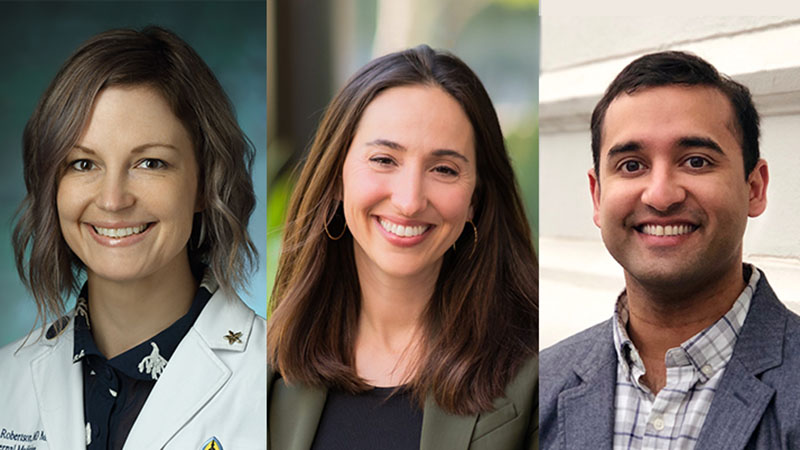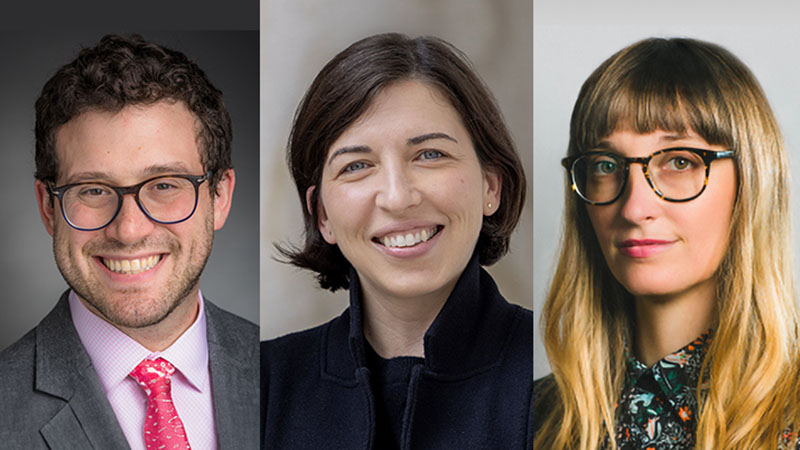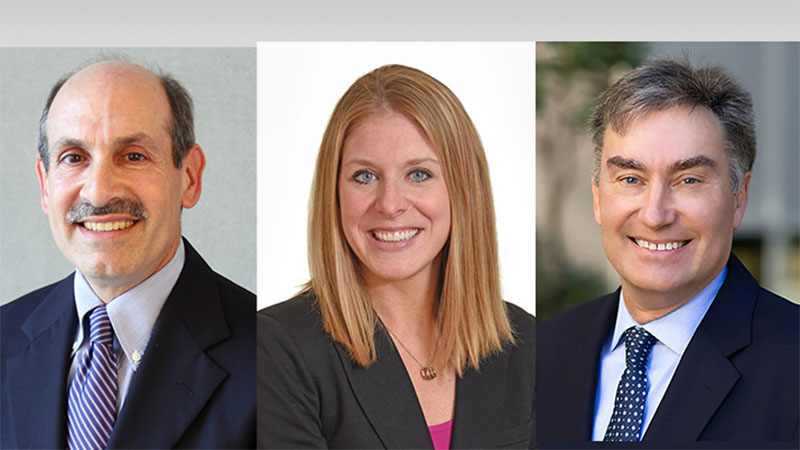
For this week’s GeriPal podcast we talk with Sandra Moody, MD, about her experiences in geriatrics and palliative care in Kamogawa City, Japan. Sandra helped to start the hospice and palliative care service at the San Francisco Veterans Affairs Medical Center prior to moving to Japan. We spoke with Sandra about differences between geriatrics and palliative care as practiced in the US vs. Japan.
Key excerpts from the transcript below:
- Japan Geriatric Society, and other similar Gerontology and Geriatric organizations were established [in Japan] even before the U.S. I thought they had a lot of clinical services, but they don’t. They had 20 to 30, they may have more now, departments of Geriatrics and Gerontology, but they were really research programs, and not clinical programs.
- Palliative Care has been around since probably 1981… first Palliative Care Unit, they say. Palliative Care is for those with cancer diagnosis only.
- Palliative Care in Japan equals Hospice care. The doctors that I’m working with are saying Palliative Care, but we’re thinking different things, and over time I realized, “Oh, this is Hospice Care.”
- This opening up to Palliative end of life care to everybody, probably will be another 10 to 20 years. Things happen slower there, and I think it’s because of decisions are made by consensus. [In the US] we say, “This is the way it is, and we just get going with it.” And things start happening, and changing. It doesn’t happen that way [in Japan]. So, [in Japan] it’s more consensus, so things can be very slow before they get to where they want it to be.
by: Alex Smith
Links:
Photo courtesy of The Economist
Eric: Welcome to the GeriPal Podcast. This is Eric Widera.
Alex: This is Alex Smith.
Eric: And Alex, who do we have with us today?
Alex: We have a special guest today. We have Sandra Moody, who started the Palliative Care service here at the San Francisco VA. She’s a Geriatrician and Palliative Medicine Physician. She comes back to San Francisco to visit once a year and work on our Clinical Palliative Care service, but for most of the year she lives in Japan, and has been there for a while. So, we’re interested to talk to her about Geriatrics and Palliative Care in Japan.
Welcome to the GeriPal Podcast.
Sandra: Thank you very much.
Alex: Thank you.
Eric: So, we usually start off with a song. Do you have a song request for Alex?
Sandra: John Legend?
Eric: John Legend.
Alex: John Legend. So, Let’s see.
Alex sings “All of Me” by John Legend.
Alex: So, Sarah, you’ve been living in Japan for the last six years, but maybe we can go back in the way back machine … All the way back to 2001. That’s when you started here at the San Francisco VA. Right?
Sandra: That’s right.
Alex: And you helped develop the Palliative Care Service back then. What was that like in 2001?
Sandra: Wow, it was ancient.
Alex: I know it. That’s like … 16 years ago.
Sandra: Yeah. So, at that time it was a nursing home care unit.
Sandra:
And they had a doctor that was interested in Palliative Care, and that person will see a patient once in a while- in the hospital. When I came they mentioned that this is a possibility … Palliative Care Service, and I found that there was not much there. So, I went through notes, there was notes, like meeting notes, and that’s where I started. I started talking to people in nursing home and trying to learn what were people interested in. And how many beds did we have, and we started building a team.
Alex: You’ve done a lot of geriatrics. You’ve worked in home-based primary care settings here.
Sandra: That’s right.
Alex: And have been involved in the Geriatrics Fellowship Programs.
Sandra: That’s correct.
Alex: Teaching Fellows in a lot of different ways.
Sandra: Yes.
Alex: And …
Sandra: Yes?
Alex: Before the last six years, you’ve been living in Japan.
Sandra: Yeah.
Alex: What brought you to Japan?
Sandra: You want to know the real story?
Alex: Yeah.
Sandra: Okay.
Alex: I think so. Well, first what’s the cover story? Maybe we’re interested.
Sandra: I don’t know that part. It was a husband. He was teaching as an architect designer, so he was teaching in Japan at this International Design Institute, in Kanazawa. He would go for a semester a year and teach. Then in 2007, the school closed, he lost Japan, and wanted to go back. He applied for a full ride scholarship. He got the scholarship. He was there for a year. I would visit quarterly, and he said, “You know, it would be great to live in Japan.” I said, “Find me a job.” There were no jobs, and we looked around, and then his professor sponsor, who was an architect … famous architect in Japan.
They had a dinner meeting, and the architect of the medical center that I now work at, was there. He was talking about this fabulous medical center. It’s privately owned by the Kameda Family, their four brothers, and this hospital has been around for three hundred years. This is the 11th generation, and it’s very patient focused. Then, my husband, Bruce said, “Oh, my wife is a doctor.” And he said, “Invite them for a tour.” And so I said, “Sure, I’ll come on my next visit.”
We go on this tour, the Executive Vice President of the hospital, who happens to be American, the only other American. He gave the tour. It was a- I was so impressed with patient-focused care. Like even the overhead tables bed tables, they had TV’s, where you could touch touchscreen. They can take a look at the medical records. They can annotate their medical records. They can look up their doctors, and look up their doctor’s background. They can choose their menus. It was just many different things I was so impressed. On the tour, John said, “You know there’s this teaching position opening up. Why don’t you send me your CV?” And the rest is history.
Alex: Tell us a little bit more about this town. Is it Kamada?
Sandra: It’s Kamogawa City.
Alex: Kamogawa City, and where is that?
Sandra: It is two hours southeast of Tokyo. It’s in Chiba Prefecture.
Alex: Is this a big city?
Sandra: About 35,000-
Alex: About 35,000.
Sandra: Mm-hmm (affirmative)- People that live there.
Alex: About 35,000. Is it fairly rural, or
Sandra: Sort of, yeah, fairly rural … With rice patties, the ocean, mountains. Very nice.
Alex: That’s nice.
Sandra: When I’m on the beach in Kamogawa, I’m waving at San Francisco.
Alex: We’re waving back, but we can’t see because of the fog.
Sandra: Yeah.
Alex: So, what’s it like working in the hospital in Japan?
Sandra: Well, this particular hospital is different on average. It’s very … Let’s see … visionary, forward-thinking. It’s one of the top hospitals in the country. It’s one of the top residency programs in the country. It’s very competitive residency.
It’s more westernized. So, this position I’m in is called a Professor in Residence. I’m the third full-time Professor in Residence. There are two other Americans, since 1992. In between, they’ve had interim people. They kind of help to westernize the place. Many of the doctors now, the younger, now they’re in their 40’s many of them, 30’s, 40’s, have come to the U.S. and trained … Have done additional training, and brought back some of the way we teach, and practice medicine. This position has helped facilitate that process. So, I teach the Junior Residents, and we can talk about that.
Alex: So, is the medical education fairly similar to in the U.S. then?
Sandra: Medical education fairly similar … Ummm, yes. But like in the U.S. we have a standardized medical education.
Sandra: Although, it’s sort of standardized there. They don’t have a national organization, except for The Ministry of Health, but nothing like-
Sandra: AAMC, yeah.
Alex: Right.
Sandra: Yeah.
Alex: Tell us about your experience in Hospice and Palliative Care and Geriatrics. What is that like in Japan? At least in the setting you’re in, cause you probably can’t speak for all of Japan.
Sandra: That’s correct.
Alex: How is that similar or different from-
Eric: We want you to speak for all of Japan.
Sandra: Well, from the Geriatrics perspective, I thought when I went, you know, Japan is an aging society, rapidly aging. One of the fastest, and maybe the fastest. It may be the oldest living society. Also, the oldest healthy, and as a matter of fact, people 70 and older. I don’t know. I can’t remember the exact number. Over 60% are still active.
Alex: Wow.
Sandra: Which is very different from the U.S. So, I thought they had more formalized programs. What I learned, they have about … actually their Japan Geriatric Society, and their other similar Gerontology and Geriatric organizations were established even before the U.S., and I thought they had a lot of clinical services, etc., but they don’t. They had 20 to 30, they may have more now, departments of Geriatrics and Gerontology, but they were really research programs, and not clinical programs. So, you see this gap between the research and the clinical. So, the Geriatrics is what it integrated in, but it’s not really like a core set of concepts that we learn in our Geriatric Fellowship.
Alex: Yeah. I see. So, there’s more of Geriatrics research and Gerontology research presence, but not as much of the clinical Geriatrics.
Sandra: That’s correct.
Alex: That’s interesting.
Sandra: Yeah. I decided that it’s not about the healthcare system, it’s about lifestyle. You know, aging society – maybe a combination, but not just about healthcare.
Alex: So, the fact that they tend to be active-
Sandra: Yes.
Alex: Into the late ages-
Sandra: Yes.
Alex: Is not due to robust clerical geriatrics presence.
Sandra: Right.
Alex: Unfortunately, although it would be great to claim credit for that.
Sandra: Yes.
Alex: It’s more due to healthy lifestyle, and environmental.
Sandra: And diet.
Alex: Diet, Uh huh.
Sandra: Yes.
Alex: What the Palliative Care landscape look like?
Sandra: Palliative Care has been around since probably 1981 … first Palliative Care Unit, they say. Palliative Care is for those with cancer diagnosis only.
Alex: Really?
Sandra: Yes.
Alex: So, they don’t have non-cancer Palliative Care in Japan?
Sandra: No, there may be some organizations or hospitals that might address those issues, but it’s overwhelming – from the Ministry of Health perspective, it’s how it’s paid for – cancer diagnosis only.
Alex: And why? Do you have a sense of why that is?
Sandra: Well, not really, except that in the 70’s there was an interest in end of life care, and there was some doctors who came to the US, who went to Saint Christopher’s-
And learned about Palliative Care Hospice and they thought of it as end of life care. So, interest grew. The focus is unclear why just cancer diagnosis.
Alex: Mm-hmm (affirmative)
Sandra: I think many Palliative Care practices start that way.
Alex: I’m sure, and I think in the U.S. that’s the sort of model Palliative started with cancer. But it’s since grown dramatically.
Sandra: Yes. Yeah, I think it’s more about prognosis. We say … We think we know the prognosis much better, for those with cancer diagnosis, than other diagnosis. So, it may be an easier diagnosis to be able to program around.
Alex: Mm-hmm (affirmative)
Sandra: But now there is great interest in broadening Palliative Care to all populations.
Alex: All populations… that’s terrific! So, here in the U.S. Palliative Care is mostly centered in U.S. hospitals, in their growing outpatient and community programs, but they’re growing. It’s mostly hospital-based consult service. You could also put Hospice, sort of in the realm of Palliative Care. There’s a lot of overlap there. What’s going on in Japan? Is it hospitals mostly? Is there Hospice? Are there Community Programs or outpatient Palliative Care?
Sandra: Yeah. Well, actually your question brings up an important point. Palliative Care in Japan equals Hospice care.
Eric: Oh … That is a big point.
Alex: That is a big point!
Sandra: Yeah, cause- So, I’m saying Palliative Care. The doctors that I’m working with are saying Palliative Care, but we’re thinking different things, and over time I realized, “Oh, this is Hospice Care.”
Alex: Mm-hmm (affirmative)
Sandra: So, they use the term Palliative Care. Rarely do they use the term Hospice.
Alex: Oh.
Sandra: But they mean end of life or sometimes they’ll say, supportive care-
Alex: Mm-hmm (affirmative)
Sandra: Or Hospice Care is the same.
Alex: It’s the same for them?
Sandra: It’s the same.
Alex: So, it’s people who are very near the end of their life. It’s not for people with just serious illness? Like what we think of Palliative Care here-
Sandra: That is correct.
Alex: Is for people who have- but is there like a less than six month Hospice prognosis?
Sandra: Yes, they do have- Yes, they do have, less than six months sometimes depending on the program, less than four months. They have many Palliative Care … like over 200, and maybe I think by now, is maybe over 200 settings. But it’s settings. There’s Palliative Care units. Hospital-based Palliative Care Teams, and what they call Specialized Home-Care Clinics.
Alex: Oh.
Sandra: So, they are … The doctors in the community have clinics, but they provide care in the home.
Alex: In the home. So, they make home visits?
Sandra: They do make home visits.
Alex: Is it interdisciplinary?
Sandra: It is as required by the Ministry of Health. They have requirements, so it has to be one Attending Physician, a Psychiatrist, and a Certified Advanced Practice Nurse.
Alex: Oh, interesting.
Sandra: You have to start with that.
Alex: So, I think in the U.S. we’d say the key components would be, Physician or Clinician, could be a Nurse Practitioner, a nurse, Social worker, and Chaplin. It’s different in Japan.
Sandra: Different in Japan.
Alex: The In-Patient Consult Team, they just focus on the cancer patients?
Sandra: Yes … And they often just focus on pain.
Alex: Oh, really? Oh, wait, wait, wait, wait … You said earlier in the podcast-
Sandra: Yes.
Alex: That the core of Palliative Care is communication?
Sandra: That’s correct.
Alex: But in Japan … the focus is on pain.
Sandra: Yes.
Alex: Say … Can you say more?
Sandra: Oh, that’s complex, but … In Japan, communication is not explicit often. It’s implicit communication. There’s a phrase you may know, “Read the Air”. You’re really paying attention. There’s another phase, “If you don’t know what to do, look to your right.” Whatever the person is doing to your right, then you kind of follow suite. The communication is not direct. Usually, even when there are … they don’t say, Roles of Care Discussion. They’ll say Informed Consent Discussion, and when I first heard that, I thought, “Informed Consent … What do you mean?” And it’s sort of like a family meeting.
Alex: Huh.
Sandra: And they’re trying to understand the goals of the patient, oftentimes, through the family. So, in the U.S. the patient is the unit of care, and the patient, if they have capacity, they invite family members in, and we talk to family members, with the patient’s permission. In Japan, it’s more the family is the unit of care. So, you’re talking a lot with family. You may not communicate diagnosis or a prognosis to the patient.
Alex: You may not? Meaning-
Sandra: The doctor.
Alex: You might not.
Sandra: You might not.
Alex: Or you may not, as you’re not allowed to?
Sandra: Both of those things. Yeah.
Eric: Yeah. So, you have to have permission of the family … from the family first?
Sandra: Oftentimes.
Eric: Before they present diagnosis and prognosis?
Sandra: Oftentimes.
Eric: In a way it comes down to, let’s say life sustaining treatment decisions, is it like here in the U.S. where those decisions put on the shoulders of patient’s family members, or do physicians make those decisions? Or is it some other way those decisions are made?
Sandra: Yeah, often the family wants the physician to make the decision or tell them what to do.
Eric: Yeah?
Sandra: Not so much getting it from the patient, and again, Kamatah’s different.
Eric: Yeah.
Sandra: Cause they have a Palliative Care Team, and I meet with them weekly, and even in general medicine, I would meet with them regularly. They do some goals of care discussions, or informed consent discussions. But a lot of times, the communication is with the family, and they do not want further discussion, and sometimes it’s this idea, as if people would live ever … as if death was not … like cancer equals death. That’s one thing, and death is equated with uncleanliness.
Alex: Hmm.
Sandra: So, there’s sort of a cultural perspective of you don’t really want to talk about death.
Alex: Hmm.
Sandra: You don’t really want to talk about dying. So it can be complicated.
Alex: That is complicated.
Eric: So there was recently an article published in the Economist, on what people want in their final years, and months, and they looked at a couple different countries, including the Unites States, Italy, and Brazil. There’s a beautiful graph that we’ll link to in our GeriPal website, for this podcast. One question in particular was they asked a bunch of people in these different countries, “How important is it, for your own death, different things, including living as long as possible?” The country that the most people thought that was very important, or extremely important, was Brazil … 70% said it was extremely or very important. Then came, the United States … a little less than 50%. Then came Italy, and then Japan was, looks like it was somewhere around 18%, so by far the lowest amount of respondents said that that was extremely-important
Sandra: That doesn’t read true.
Eric: That does not read true. No?
Sandra: That’s not my-
Alex: In context, were they given other options? You know, yes, they asked a bunch of different questions. Like how important is family not being a burden financially. So, what did the Japanese rate highly?
Sandra: Worry a lot about the cost of funerals, which could reach up to $3 Million yen or $27,000.
Alex: What?
Sandra: Very expensive.
Eric: Wow …
Alex: Why?
Sandra: It’s a business.
Alex: So, there’s a business opportunity there. The price of funerals has gone up.
Eric: It must have been a shock going from the U.S., where you taught our Fellows about communication. How much does that apply in a Japanese hospital?
Sandra: I think it’s a struggle.
Alex: We’re seeing a lot of societies and researches backing this up, is that pairing of studies in JAMA showed that the majority of people in Italy would not want to be told their diagnosis if they had a terminal diagnosis of cancer. But then when they repeated the study more recently, most people would want to be told.
So, it seems to be a shift … a cultural shift in terms of the norms, ethical norms about what’s acceptable in truth telling.
Sandra: Yes.
Alex: Is it- have you noticed-
Sandra: Yes. Yes, there are some. Yes, there are changes. It’s gradual. The U.S. for instance … If we agree on something, then you can see this change gradually … There’s this unified front about something, like a movement, and then it grows and grows. They have pocket movements in Japan, but things happen in they move fragmented way on the ground. It’s hard to bring it all together and say, “Yes, here it is.” When we were talking in the Palliative Care session, that’s okay, cause ten years get here. This opening up to Palliative end of life care to everybody, probably will be another 10 to 20 years. Things happen slower there, and I think it’s because of decisions are made by consensus. Here we say, “This is the way it is, and we just get going with it.” And things start happening, and changing. It doesn’t happen that way so much. So, it’s more consensus, so things can be very slow before they get to where they want it to be.
Eric: Alex, you want to end us with a song?
Alex: Yeah. I just want to say thank you, Sandra. That was terrific.
Sandra: You’re welcome.
Alex: Really enjoy every time you visit, once a year.
Sandra: Thank You.
Alex sings “All of Me” by John Legend.
transcript edited by: Sean Lang-Brown



